HERAKLION TRAVEL GUIDE

Please note
My Reservation
Modal title
Please note
Heraklion Ferries
See what our customers say about us!
Reviews
4.8 stars
1526 reviews

YOUR PERSONAL
FERRY BOOKING AGENT
Each of our customers is assigned a personal Ferry Booking Agent who speaks their language and replies within 3 working hours. Your agent is available to you before, during and after your trip.
Greekferries Club Bonus Per Mile
Collect 'miles' every time you travel by ferry, regardless of the ferry company you travel with!
Redeem your Miles and get discounts and FREE tickets!
Economy Car Rentals
in HeraklionOffers all year round!
Rent a Car
Heraklion Ferries Crete Island
Ships and Ferries to Heraklion in the Crete IslandTravel Information for ferries to Heraklion. Heraklion - Crete Island
HERAKLION > MUSEUMS
MUSEUMSHeraklion Archaeological Museum
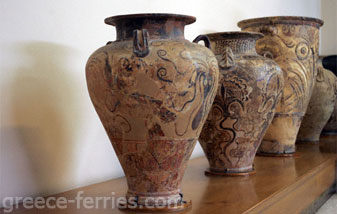
The Heraklion Archaeology Museum is located in the centre of Heraklion and houses a very large collection of relics of the ancient Cretan cultures found during excavations.
The museum collection covers a period of 5,500 years of history from the prehistoric, Neolithic and Roman times. The most significant and extensive collection covers the Minoan period with examples of the development of Minoan craftsmanship and art. The most important items are the Phaestos Disc and the gold necklace of the Bees which was found in the necropolis at the Malia Palace site.
The Cretan Historical Museum
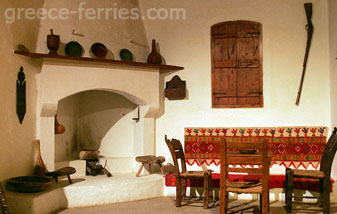
The Historical Museum is housed in a Neoclassical building near the port of Heraklion. The museum was founded in 1953 by the Institute of Historical Cretan Studies. The exhibits include historical, religious and items of an ethnological significance as well as items of traditional Cretan folk crafts. They are separated into sections covering the Byzantium, the Middle Ages, Historic and Folk Art collections, the Nikos Kazantzakis Room and the Tsouderou Room.
The Natural History Museum
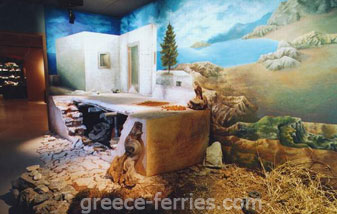
The Natural History Museum of the University of Crete offers visitors a unique opportunity to see the characteristics of the Cretan environment. Separate areas of 800 m² with realistic representations of cottage industries, plant, animal and photograph collections.
The Cretan Ethnology Museum
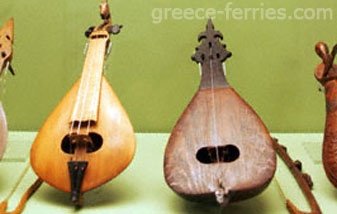
The Ethnology Museum of Crete is located 2 km from the archaeological site of Phaestos in the village of Vori. The museum was founded in 1988 and received an award from the European Community in 1992. The collection is exhibited in the unique style of G. H. Riviere and displays Cretan traditional life: diet, architecture, weaving, production, transportation, community organisation, customs and traditions.
Within the museum is a research workshop centre of the Cretan ecosystem studying the traditional activities from the middle ages onwards through the historical and social course of Crete as well as the political and geophysical environment of the island.To date there have been 14 volumes published on the subjects of: architecture, traditional crafts, the economy etc.
The Nikos Kazantzaki Museum
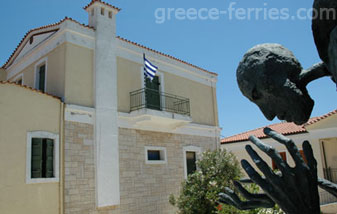
The Nikos Kazantzakis Museum pays homage to the great Cretan thinker, writer, poet, philosopher, politician and traveller of the 20th century. The Museum is housed in a complex of building located in the village of Myrtia, formerly known as Varvari.
The museum collections and exhibitions include: his notes, correspondence with other writers and politicians, first editions of his books in Greek and other languages, rare photographs, mementos of his travels, personal items, templates, costumes and other items from the productions of his plays in Greece and abroad, portraits and sculptures bearing his image and so much more that depicts the work, character and spirit of Nikos Kazantzakis.
The Museum of Cretan History & Traditions
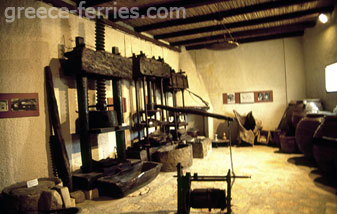
The Museum of Cretan History & Traditions is housed in a large covered area 3 km from Arhanes. Mihalis N. Psatakis exhibits his collection of artefacts that represent Cretan history and traditions from the 9th century onwards. An important part of this collection covers the last 200 years including military items from WWII, a jeep, a tank, German cars as well as personal object that belonged to the German General Kraipe.
There are five rooms with utensils and machinery used in the occupations such as: looms, wine and olives presses. Outside there is a windmill to pump water and another used for the grinding of grain to produce flour.
The Agricultural History & Folk Art Museum
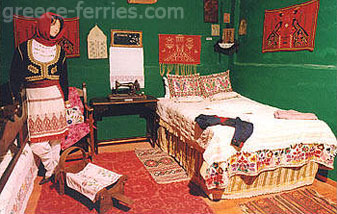
The Museum of Rural History and Folk Art is part of the cultural mosaic presented at Arolithos. The collection exhibits the richness and development of the unique Cretan rural life, folk art and handicrafts.
There are four distinct areas of the Cretan rural life. The first part has display cabinets containing Cretan handicrafts of embroideries, weavings, jewellery etc. The second part displays the basic characteristics of the Cretan home: the bedroom and the sitting room, both richly decorated. The third part covers the rural occupations: the saddler, the farmer, the blacksmith etc. The last part covers the outbuildings connected with cattle and farming.

Why book with Greekferries Club
Simple. We are here for you every step of the way.

The Greekferries
Booking Engine
Enter your ferry routes and travel dates and we guide you from there. Find all schedules, availability and prices and book your ferry tickets in three simple steps!

The Best Ferry Ticket Price
We include all the discounts you are entitled to. You don’t have to do any research!

The Secure Payments
Our payment gateway is fully compliant with the PSD2 SCA / EMV 3-D Secure 2.0 directives and guidelines.

The Chat Service
If you encounter any difficulty or simply have a question, use the chat service in our booking engine and we’ll be happy to help!

YOUR Personal
Ferry Booking Expert
Whether you complete your booking online or ask for our assistance, you will be paired with an experienced agent who speaks your language fluently.